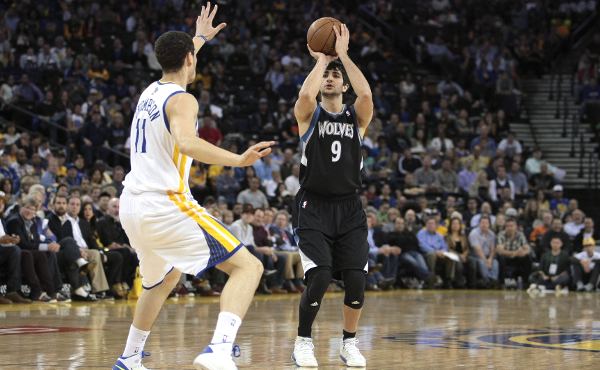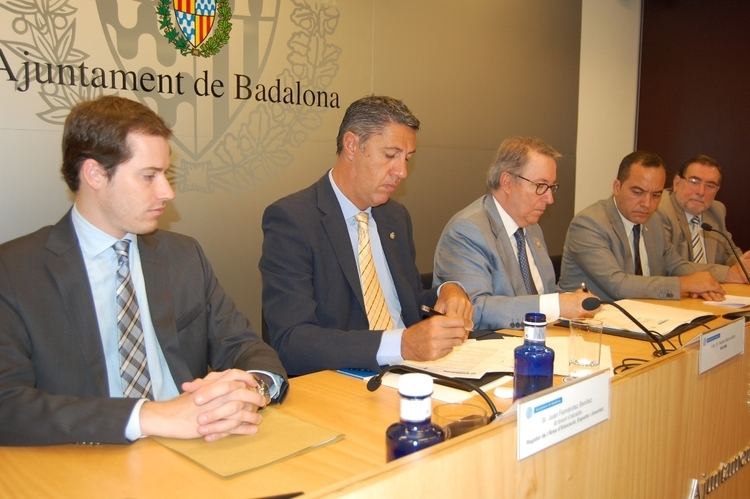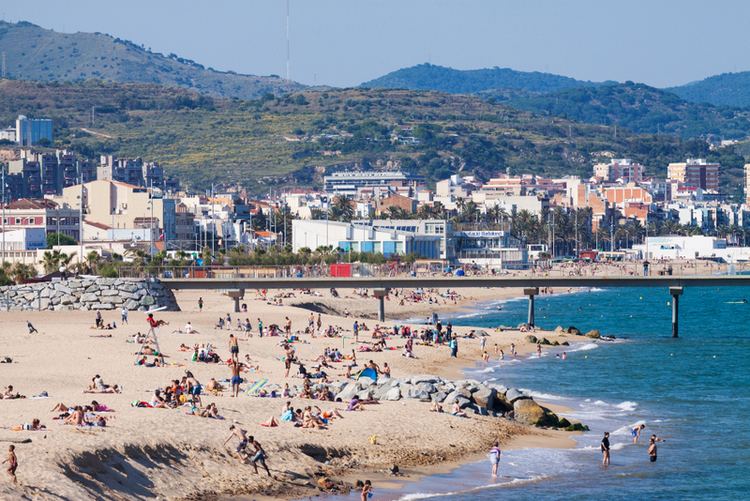Country | Population 220,977 (2012) Area 22.17 km2 | |
 | ||
Map of Badalona
Badalona ([bəðəˈɫonə]) is a municipality to the immediate north east of Barcelona in Catalonia, Spain. It is located on the left bank of the small Besòs River and on the Mediterranean Sea, in the Barcelona metropolitan area.
Contents
- Map of Badalona
- Mark knopfler sultans of swing 2001 badalona
- Mr freak ska fast food estraperlo club badalona 08th october 2011 2 of 5 videos
- History
- Main sights
- Transportation
- Population
- Economy
- Culture
- Sport
- Twin towns
- References

By population, it is the third largest in Catalonia and the twenty-third in Spain. It became a city in 1897.

Mark knopfler sultans of swing 2001 badalona
Mr freak ska fast food estraperlo club badalona 08th october 2011 2 of 5 videos
History

Badalona was founded by the Romans in the 3rd century BC, with the name of Baetulo, although human settlements in the area existed from 3500-2500 BC. The Iberians had fortified villages on the Melasas and Boscà hills since the 7th century BC. The Roman town's plan was based on their common scheme of the cardo and decumanus, occupying some 11 ha, with a line of walls measuring 413x261 m and having large defensive towers. In the 1st century BC it had some 15,000 inhabitants.
The current Badalona was formed in the 10th century, as a new urban nucleus built over and around the old Roman city. It comprised a group of houses built around the square and the church. At the same time, a rural nucleus grew up outside the town walls. This rural and urban dichotomy would remain until the mid-18th century.
Sant Jeroni de la Murtra Monastery, built in the 14th century, is where the Catholic Monarchs would spend their summers. This is also where they received Christopher Columbus after his first voyage to the Americas.
Badalona was one of the most important towns during the Spanish industrialization process, from the 19th century onwards.
Today, Badalona is in the middle of a process of major urban change which will provide one of the challenges for the 21st century.
Main sights
Transportation
Badalona has a RENFE (train) station R1 from Barcelona to Mataró - Blanes, as well as a small harbour. There are also links to Barcelona via the Barcelona Metropolitan Transport (TMB) metro (underground) and bus system, as well as the Trambesòs line.
Population
Badalona also has the second-largest Moroccan and Pakistani populations of Catalonia. Other significant communities include Maghrebis, Chinese, and Indians.
Economy
The harbor is chiefly important for its fishing and boat-building trades, while in town there are gas, chemical and mineral-oil works, as well as the manufacture of woolen and cotton goods, glass, biscuits, sugar and brandy. The surrounding fertile plains produce an abundance of grain, wine and fruit.
The city is home to the historic distillery which produces Anís del Mono, a spirit made of herbs and anise, the most famous anisette in Europe.
Culture
In May, in occasion of the celebration of Saint Anastasi, the patron saint of Badalona, activities and festivals are organized all around the city. The most important celebration takes place the day before Saint Anastasi Day when, at night, people gather at the maritime promenade to participate in the popular Cremada del Dimoni (Devil-Burning)--similar to the famous Valencian Falles.
Sport
The city's most important sport complex is the Palau Municipal d'Esports de Badalona (Municipal Sports Palace), which won the Mies Van der Rohe award in 1992. The Palace was the setting for basketball competition during the Olympic Games in 1992. Nowadays, it is home of the basketball team from Badalona, Joventut de Badalona, also known as la Penya. This place will also be the center of the Badalona Capital Europea del Bàsquet, which is intended to be a theme park celebrating basketball - with a basketball museum, shopping center, cinemas, basketball courts, a harbour, indoor karting and more activities.
